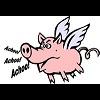Who Here Has Blown Their Turbo?
Announcements
-
Similar Content
-
Latest Posts
-
What transmission are you running? It's a bit tricky with the scaling, but at face value the power "curve" looks more like a "line" which is a bit odd... basically a lot more like a dyno plot I'd expect with a highish (compared to a factory auto) stall torque converter type setup. If this is running an auto then this kind of boost control challenge is definitely a thing, the rpm scale on the dyno doesn't reflect what the engine is actually doing (unless the dyno has access to the engine's ACTUAL speed electronically) and what you'll get is a big rpm flare up as the engine torque launches past the converter pump's ability to resist torque at that rpm, then as the converter starts picking up rpm it will kinda even out again and the engine rpm will pick up more steadily. The trick with this "flare up" is if it's kinda near the boost threshold for the turbo then the engine's airflow requirements to maintain the previous boost level will outrun the turbo's ability to supply that boost - so you end up with a natural flattening off, if not dip when that happens. If you are running closed loop, or even tune the "feed forward" wastegate duty cycle to deal with that rpm spike then when the engine starts settling to a more typical climb you'll actually have a situation where the gate is "too closed" and boost will run away for a bit, then have to pull down again. It's not trivial to get this perfect as most boost control systems are generally expecting more predictable engine rpm rates of change, but if you *know* that's whats going on then you can at least "accept your fate" and realise getting that area perfect is kinda chasing your tail a bit, and assume that if the rest is working sensibly and the spike/dip isn't completely uncontrolled then you should be good. Sorry if I've gone off on a tangent, but the dyno plot and boost control behaviour look a LOT like what I've seen tuning autos in the past. What ECU are you running? Could possibly be convinced into looking at logs if I get too bored this weekend haha.
-
A few things that seem a bit off here. - why is there 2 BOV’s? - the turbo smart BOV on the compressor housing, is it turned up ALL the way? I have seen this become an issue on old man Pete’s car. It would push open and recirc, turbo speed would rise and the boost pressure would do weird things. - stock head? Does that include springs? - tried a different MAC valve? Is it plumbed correctly?
-
Photo of manifold showing gate location? I mean, it's 6Boost, so we probably shouldn't be worrying, but always wroth knowing what the layout is. Plumbed back to atmosphere? Or into the dump?
-
By Murray_Calavera · Posted
Yes correct. Also, I'd avoid applying it to soft paint (however I doubt you'll ever have to deal with it in practice). So any paint that hasn't fully hardened, could be a 1k paint that never fully hardened or it could be a 2k paint that was laid down thick and hasn't yet fully hardened. -
Wow, i wish i found this sooner.
-





Recommended Posts
Create an account or sign in to comment
You need to be a member in order to leave a comment
Create an account
Sign up for a new account in our community. It's easy!
Register a new accountSign in
Already have an account? Sign in here.
Sign In Now